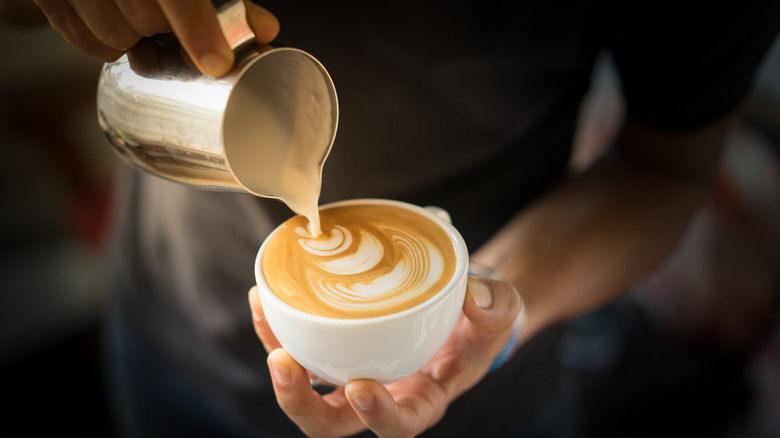Swirling Your Espresso Is Key To Creating The Best Coffee Art
If you're someone who looks forward to the ferns, hearts, or other kinds of latte art that comes with your morning coffee shop run, you likely are already aware of the need for fluffy, frothed milk to get the best results. Whether you splurged and have your own espresso machine or purchased a frothing tool such as a pump frother or frothing wand, good quality microfoam is needed to make your coffee art pop. However, baristas will tell you that swirling the espresso is just as important.
Crema is the froth that settles on the top of the espresso shot after it's poured. By swirling the espresso, the crema is evened, thinned, and smoothed out. The bubbles also break apart, and the color becomes consistent throughout the shot. This makes it much easier to make coffee art because the foam moves more easily across the espresso and provides contrast between the espresso and foam that coffee artists try to accentuate. You also get a shiny, finished look more easily. Those who participate in coffee art competitions are even judged on this, referred to as Contrast Between Ingredients at the World Latte Art Competition.
Perfect microfoam is essential to the best coffee art
"Latte art adds something to the coffee-drinking experience," Alessandro Zengiaro, the 2020 UK Latte Art Champion, tells Perfect Daily Grind. "Think about cooking — when a dish looks great, it improves the whole eating experience, and so does latte art with coffee." While swirling your espresso shot is essential to creating the best coffee art, it isn't the only aspect professional baristas and latte art judges are mindful of. While the smooth, homogenous appearance of the espresso is critical to providing the contrast the judges look for, that contrast wouldn't be possible without the perfect milk microfoam.
The key to creamy and silky foam for coffee art is using cold milk containing the correct ratio of fat to protein, which is why skim and whole milk are traditionally used in latte art championships. "Cow's milk is the easiest to work with and gives the best results when it comes to microfoam and texture," Zengiaro explains.

